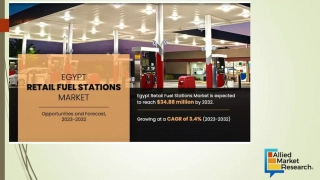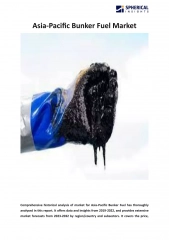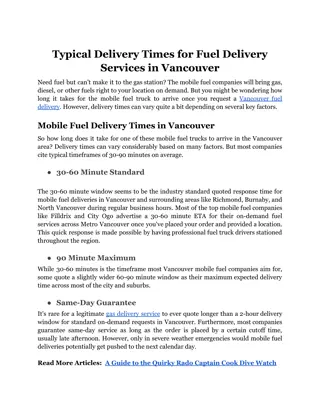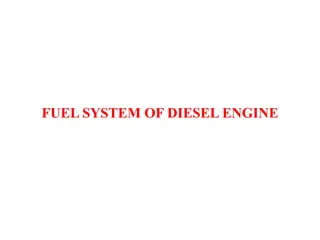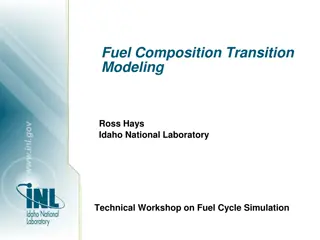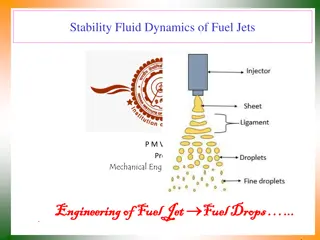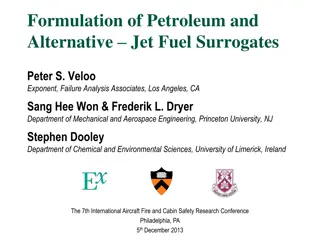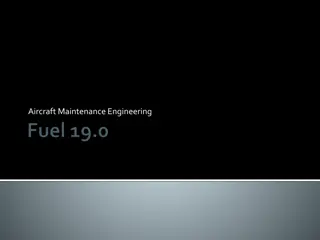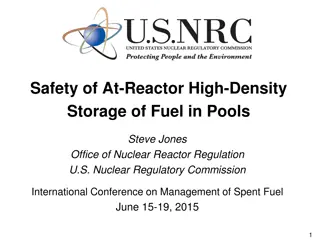Bunker Fuel Market
Bunker fuel is a fuel oil used in marine vessels. It is poured into the ship bunkers to keep the engines running. Ships use three types of marine fuels, which include high sulfur fuel oil, low sulfur fuel oil, and diesel oil. Presently, growth in awareness toward reducing environmental pollution and stringent government regulations are expected to provide lucrative growth opportunities for the fuels, including liquefied natural gas (LNG), gasoil, and liquefied petroleum gas (LPG) as a substitute to the above-mentioned bunker fuels.
Uploaded on Jan 30, 2024 | 7 Views
Download Presentation

Please find below an Image/Link to download the presentation.
The content on the website is provided AS IS for your information and personal use only. It may not be sold, licensed, or shared on other websites without obtaining consent from the author.If you encounter any issues during the download, it is possible that the publisher has removed the file from their server.
You are allowed to download the files provided on this website for personal or commercial use, subject to the condition that they are used lawfully. All files are the property of their respective owners.
The content on the website is provided AS IS for your information and personal use only. It may not be sold, licensed, or shared on other websites without obtaining consent from the author.
E N D
Presentation Transcript
Introduction The bunker fuel market size was valued at $109.6 billion in 2020, and is estimated to reach $164.9 billion by 2030, growing at a CAGR of 4.3% from 2021 to 2030. Bunker fuel is a type of fuel oil used on ships that travel internationally.. It is put into the bunkers of ships to fuel the engines.. Bunker fuel gets its name from tanks on ports and in ships that it is stored in. It was known as coal bunker initially, but now it is called as bunker fuel tank. Bunker fuels are used to power their motors, engine, drive, and other equipment in the marine vessels. Rise in marine trade increased the demand for bunker fuel and bunkering services. Increase in oil & gas exploration activities in emerging oil regions drives the growth of the bunker fuel market as many bunker fuel suppliers changed their focus of operation to these offshore resource sites. In addition, fuel reduction initiatives by shipping industries hamper the market growth. Download PDF Sample
Depending on the type, the low sulfur fuel oil segment held the highest bunker fuel market share of around 65.17% in 2020, and is expected be dominant during the forecast period. This is due to implementation of IMO-2020, hence there will be decrease in demand for HSFO, which, in turn, is expected to fuel the market growth for low sulfur fuel oil in the future. Depending on commercial distributor, the oil major segment holds the largest share, in terms of revenue, and is expected to maintain its dominance during the forecast period. This growth is attributed to dominance of oil majors in the crude oil tanker chartering business across the globe. By application, the container segment holds the largest share, in terms of revenue, and is expected to grow at a CAGR of 4.6%. This is attributed to increase in demand for cargo transportation through ships and rise in trade-related agreements. In addition, rise in number of manufacturing units and factories in the region such as Asia-Pacific and LAMEA drive the growth of the bunker fuel market for container shipping. Download PDF Sample
Key findings of the study In 2020, low sulfur fuel oil segment accounted for majority of the share of the global bunker fuel market, and is expected to down throughout the bunker fuel market forecast period. In 2020, the oil major segment accounted for about 44.9% of the share in the global bunker fuel market, and is expected to maintain its dominance till the end of the forecast period. The container segment is accounted for 22.8% market share in the year 2020, and is anticipated to grow at a rate of 4.6% in terms of revenue, increasing its share in the global bunker fuel market. Low sulfur fuel oil is the fastest-growing fuel type in the Asia-Pacific bunker fuel market, expected to grow at a CAGR of 5.2% during 2021 2030. Asia-Pacific is expected to grow at the fastest rate, registering a CAGR of 4.7%, throughout the forecast period. In 2020, Asia-Pacific dominated the global bunker fuel market with more than 47.04% of the share, in terms of revenue. Download PDF Sample
The key players profiled in the report include: BP p.l.c. Exxon Mobil Corporation Royal Dutch Shell PLC. Lukoil Sinopec Group Gazprom Neft PJSC Chevron Corporation Download PDF Sample
Thank You! For More Details Visit us at https://www.alliedmarketresearch.com




